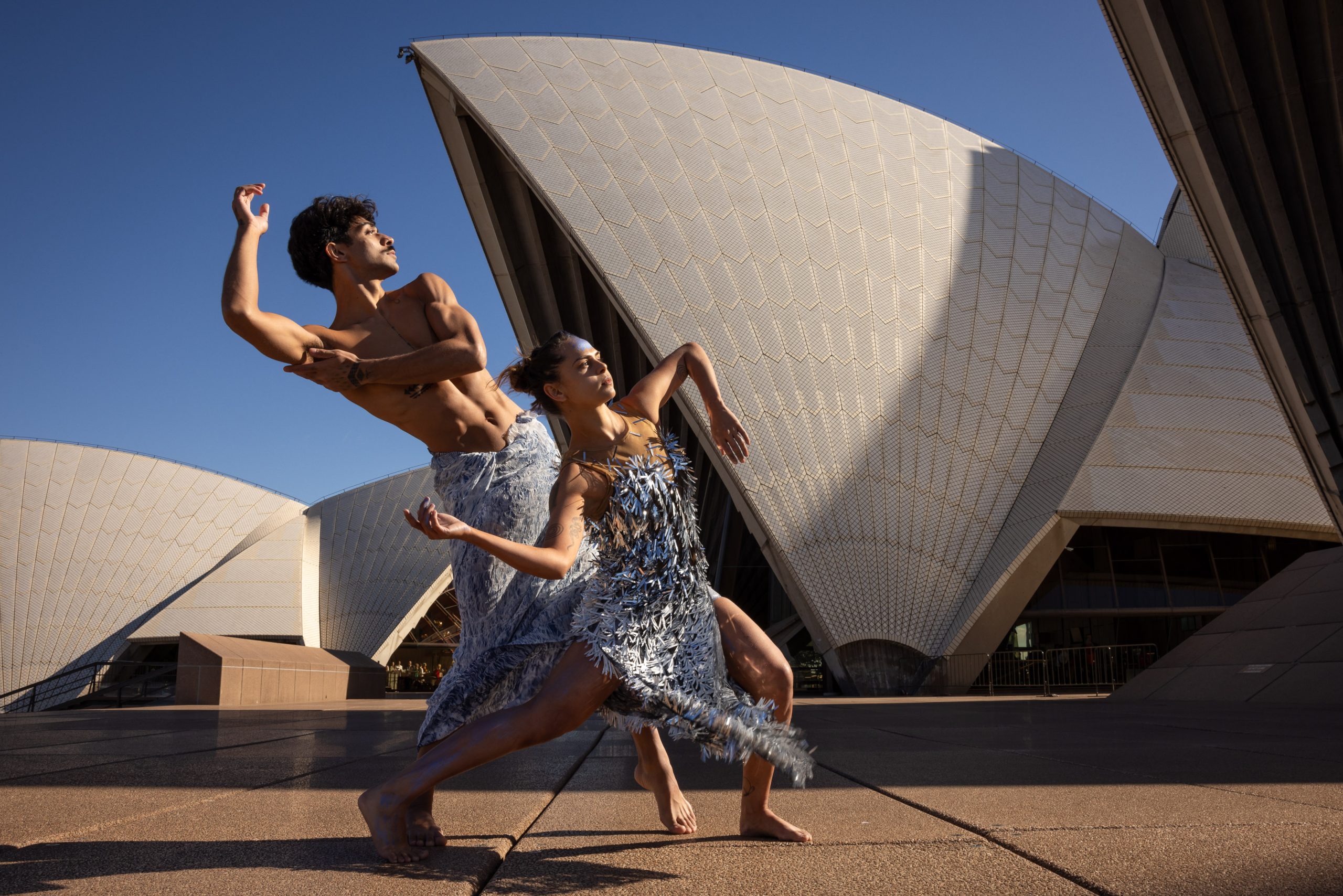When the curtains rise on “Horizon”, the new cross-cultural work from Bangarra Dance Theatre, it might take you a moment to process what you’re looking at. A dancer curled into a ball held aloft by the group, while a ceiling mirror creates the illusion of additional dancers or upside-down performers. This mirror proves crucial in narrating parts of the production, and in bringing to life the stories of the First Peoples of the Oceania region (the set design is by Elizabeth Gadsby).

“Horizon” explores the different meanings of “home” through the voices of three choreographers: Sani Townson, a descendant of the Samu, Koedal and Dhoeybaw clans of Saibai Island; Deborah Brown, an alumna of Bangarra and a descendant of the Wakaid Clan of Badu Island and the Meriam people of Murray Island; and Moss Te Ururangi Patterson, whose roots stretch from Turangi, near Lake Taupō, Aotearoa (New Zealand). Together, they lead an ensemble of 16 First Nations dancers who tell a story of resilience and the cultural forces that bind First Peoples together.

The production opens with an expanded iteration of Townson’s acclaimed work “Kulka”, which debuted as part of “Dance Clan” in 2023. Townson vividly portrays his deep respect for ancestral lineage in the dance “Koedalaw Awgadh” (Crocodile God). It is represented on stage through the “ancestral” crocodile in its predatory mode, which is projected atop the dancers, creating a powerful and evocative illusion.
This is followed by “Danalayg” (Life), concluding act one. It nods to the belief that the universe is the ultimate mother, guiding people to their heritage and clan. Strategic lighting (designed by Karen Norris), when amplified through the mirror’s reflection, creates a scene in which the dancers appear to be in a twinkling universe. The act concludes dramatically with the dancers lying on top of one another, a symbol of interconnectedness.
When the curtain rises for act two, “The Light Inside”, the mirror has been replaced by a mountainous backdrop. The first section, titled “Salt Water”, pays homage to Deborah Brown’s motherland, the Zenadth Kes (Torres Strait), which she describes as an “amazing archipelago united by its water currents”. Brown explores the idea that in contemporary society, culture is never completely lost, but is continuously shared through song, dance and cooking — symbolically represented on stage by dancers adorned in traditional pieces, offering leaves and seeds to one another.
In the section “Fresh Water” of act two, Moss Te Ururangi Patterson delves into his cultural roots, emphasising the importance of upholding cultural connections and stories across generations. He achieves this through the retelling of traditional stories through a modern lens. In “Makawe Tapu” (Sacred Hair), Patterson references two traditional tales: the attainment of the three baskets of sacred knowledge; and the story of Maui’s attempt to tame the sun, Tama-nui-te-rā. Maui’s task was only successful when his sister gifted him sacred strands of her hair, providing him with the knowledge, strength and courage to complete his mission.
On stage, the interaction between Maui and his sister is depicted through the dancer harnessing the woman’s hair, pulling her back and forth. The dance transitions into the next tale, the attainment of the three baskets of knowledge, where three dancers braid their hair together, underscoring themes of strength, wisdom and the divine feminine.

The final moments of “Horizon” showcase Hokioi, a spiritual warrior leading the ensemble into a future of love and resilience, complemented by a soothing sound of trickling water, reinforcing the interconnections that run through the entire production.
Bangarra’s decision to showcase this cross-cultural production not only helps to preserve the stories of First Peoples, but also highlights their pivotal role in shaping the present and future of the Oceania region.
“Horizon represents a fresh and dynamic new chapter in Bangarra’s artistic and cultural Songline by building relationships with international First Nations artists to share story, song and dance,” says Bangarra Dance Theatre’s artistic director, Frances Rings. “I believe that opportunities like this open us to a broader global First Nations perspective on issues that impact our People and Country, and the responsibility we carry to give a platform to the uniqueness of our stories through contemporary and cultural expressions.”
Tickets for “Horizon” are on sale now.
Sydney Opera House, until July 13
Canberra Theatre Centre, July 18–20
Queensland Performing Arts Centre, August 7–17
Arts Centre Melbourne, August 28–September 7




 The dancers Daniel Mateo and Lillian Banks out the front of the Sydney Opera House, where "Horizon's" premier took place. Photograph by (c) Daniel Boud.
The dancers Daniel Mateo and Lillian Banks out the front of the Sydney Opera House, where "Horizon's" premier took place. Photograph by (c) Daniel Boud.